Japanese Tomato Curry
4.8
(22)
Your folders
Your folders
Prep Time: 30 minutes
Cook Time: 150 minutes
Total: 180 minutes
Servings: 8
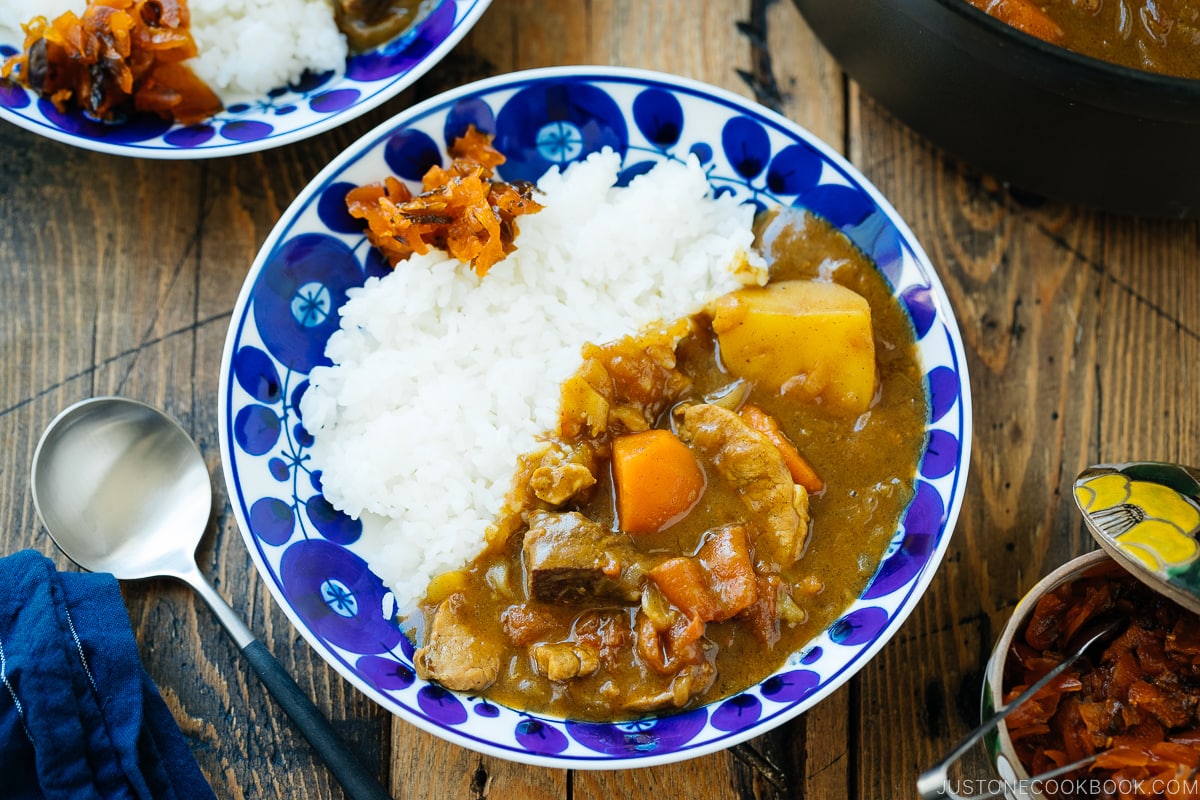
Ingredients
Export 13 ingredients for grocery delivery
Instructions
Step 1
Gather all the ingredients.
Step 2
Prepare a medium pot of water and bring it to a boil. Now, core the tomatoes: Insert the tip of a very sharp knife (like a paring knife) at the stem end, about ½ inch (1.25 cm) deep. Angle the knife and cut around the stem end in a circular motion to remove the hard core. Next, lightly score the skin on the bottom of the tomato with an "X" about 2 inches (5 cm) long. Repeat with the rest of the tomatoes.
Step 3
Gently place the tomatoes in the boiling water. Make sure there is enough water to completely submerge the tomatoes. Blanch for 15 seconds or until you see the tomato skins start to peel back. You don’t have to wait until all the skin is completely peeled. Larger tomatoes may require more time, but don’t overcook them because the flesh will become mushy.
Step 4
Using a fine-mesh skimmer or slotted spoon, remove the tomatoes and immediately transfer them to a bowl filled with ice water to quickly cool down and stop cooking.
Step 5
For this Japanese Tomato Curry recipe, RESERVE this tomato blanching water! We will use it later. When the tomatoes are cool enough to handle, peel and discard the tomato skins using the knife or your fingers.
Step 6
Cut each tomato into 8 wedges. Set aside.
Step 7
Peel the potatoes and remove the eyes.
Step 8
Cut the potatoes into 1½-inch (3.8 cm) pieces. Soak the pieces in water for 15 minutes (or until added to the pot later on) to remove the starch. Drain and set aside. Tip: My russet potatoes are on the small side, so I cut them into quarters. For typical russet potatoes, cut them into thirds, then cut each piece in half or quarters.
Step 9
Cut the onions in half lengthwise. Then, cut each half into thin lengthwise slices.
Step 10
Peel the carrots and cut them diagonally while rotating a quarter turn between cuts (we call this cutting technique rangiri in Japanese).
Step 11
Peel the garlic cloves and mince them (I use this garlic press). Peel and grate the ginger, measure the amount needed, and set aside.
Step 12
Cut the beef chuck roast into 1½-inch (3.8 cm) cubes. Next, cut the pork tenderloin into ¼-inch (6.3 mm) slices.
Step 13
Lightly sprinkle the beef and pork with salt and pepper.
Step 14
Preheat a large heavy-bottomed pot (I used this 5.5-QT Staub Dutch oven) on medium heat. When the pot is hot, add half of the oil. Add some of the beef cubes in a single layer, leaving plenty of space between each piece of meat. Make sure not to crowd the skillet; otherwise, the excess moisture in the pan will end up "steaming" the meat. Cook the beef in 2-3 batches.
Step 15
Sear the beef cubes (do not move them) on one side until brown and crusty, about 3-4 minutes, then flip to cook the other side. The meat will release itself from the pan when the surface is seared nicely. Transfer the seared meat to a plate and work on the next batch.
Step 16
When you finish searing all the beef, add the onions to the pot and deglaze the bottom of the pot.
Step 17
Add the oil, if needed (I added ½ Tbsp of oil here). Sauté the onions, stirring once in a while, for about 6-8 minutes. When the onions are wilted, reduce the stove's heat to medium low (as they tend to burn quickly).
Step 18
Once the onions are tender, translucent, and a bit caramelized, add the grated ginger and minced garlic to the pot and stir to mix.
Step 19
Add the pork tenderloin, seared beef, and any juices from the plate.
Step 20
Stir to mix.
Step 21
Next, add the beef stock.
Step 22
Measure the reserved tomato blanching water and add it to the pot.
Step 23
Add the tomatoes and carrots. (If you are using Yukon gold potatoes, you can add them now. Otherwise, don't add the russet potatoes yet.) The cooking liquid should just cover the ingredients; if it doesn’t, add some of the tomato blanching water to the pot.
Step 24
Cover the pot with a tight-fitting lid and bring it to a boil. Tip: Compared to Le Creuset, I think Staub has a great seal on the lid and prevents evaporation.
Step 25
Once boiling, skim off the scum and fat from the broth using a fine-mesh skimmer. Tip: I add water to my 2-cup measuring cup and rinse my fine-mesh skimmer in it as I go. It’s easy to remove the scum/fat from the skimmer this way.
Step 26
Add the soy sauce and cover the pot with the lid. Simmer on low heat, stirring the pot occasionally, until the meat is tender to your liking. This may take 1 hour or longer, depending on the size of the pieces and the cut of beef. Tip: While the meat might be ready after about an hour of cooking, it typically takes 2 hours of simmering for fork tender beef. Tip: If the cooking liquid has evaporated, you may need to add more beef stock or tomato blanching water, enough to just cover the ingredients.
Step 27
When the beef is tender, add the russet potatoes, close the lid, and simmer for an additional 15 minutes until the potatoes are cooked through.
Step 28
When the potatoes are tender (check by piercing one with a wooden skewer), turn off the heat.
Step 29
Put 1-2 cubes of the curry sauce roux in a ladleful of cooking liquid, slowly let it dissolve with a spoon or chopsticks, and stir it into the broth to incorporate. Repeat with the rest of the blocks, 2 cubes at a time. Adjust the amount of curry sauce roux to your taste. You may not need to use all the roux; reserve the extra cubes for another use. After adding the curry roux, simmer on the lowest heat, stirring often, for 3-5 minutes until the sauce thickens. Be careful not to burn the curry sauce! If it's too thick, add more tomato blanching water to dilute. If the sauce is too thin and soupy, uncover the pot and simmer a bit longer to reduce the liquid.
Step 30
If you're using my homemade Japanese Curry Roux, which is unsalted, season the curry sauce with an additional 2-4 tsp of salt, to taste.
Step 31
Serve the Tomato Curry hot on individual plates or shallow bowls alongside Japanese steamed rice and top with fukujinzuke (pickled radish). In the Netflix drama The Makanai, Kiyo serves tomato curry with suage vegetables (eggplant and shishito peppers). You can deep fry vegetables of your choice following my Sapporo Soup Curry recipe and served on top of tomato curry.
Step 32
Keep the leftovers in an airtight glass container and store it in the refrigerator for up to 3 days or in the freezer for a month. The texture of the potatoes will change in the freezer, so remove them before freezing. Defrost the frozen curry in the refrigerator for 24 hours and reheat in a pot to serve. If needed, add ¼ to ½ cup (60-120 ml) of water to dilute the curry when reheating. If you have any leftover unused curry roux, keep in an airtight container and store in the refrigerator or freezer for 1-3 months.
Top similar recipes
Curated for youYour folders
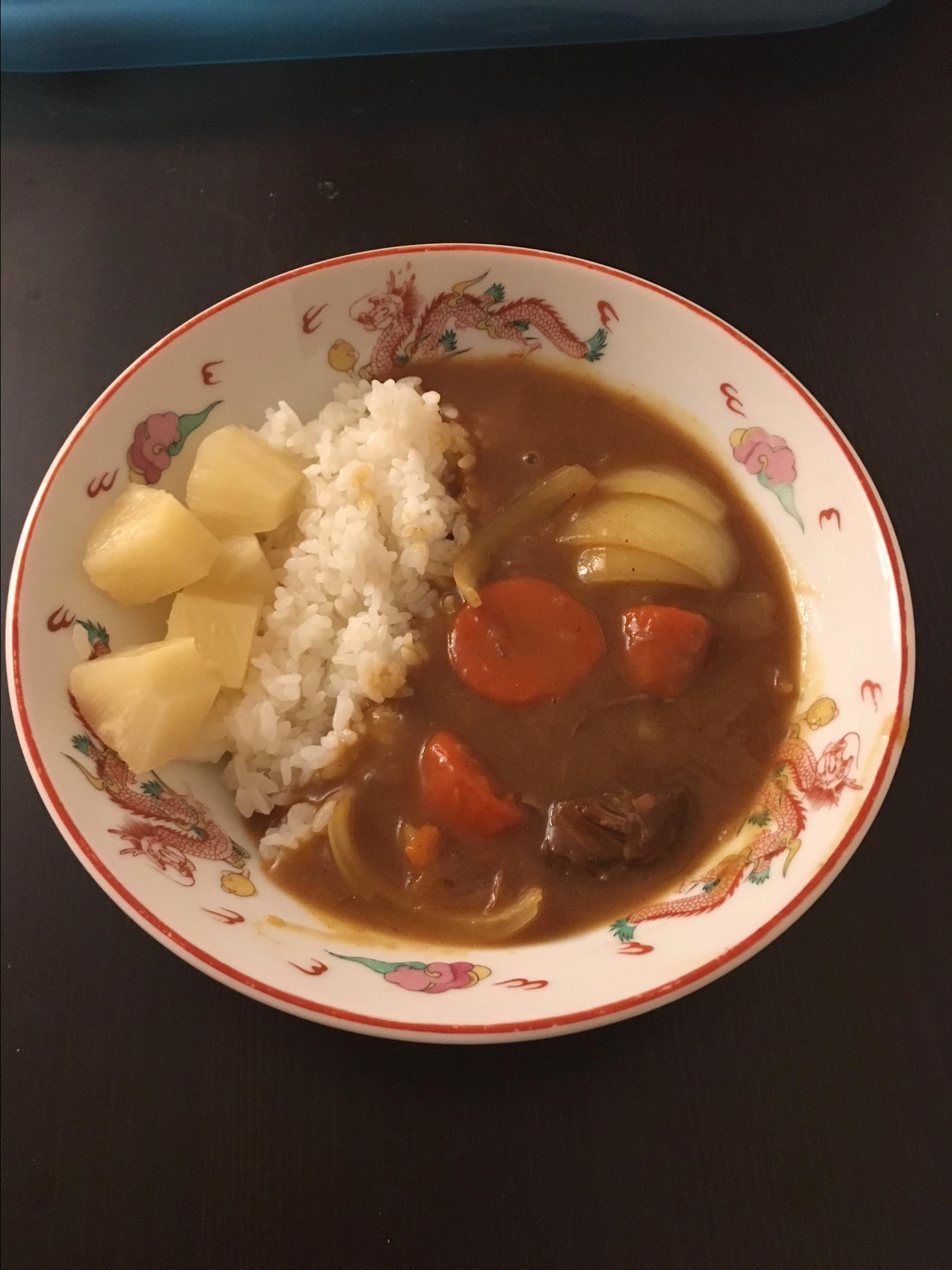
 289 views
289 viewsJapanese Curry
allrecipes.com
5.0
(3)
1 hours, 10 minutes
Your folders
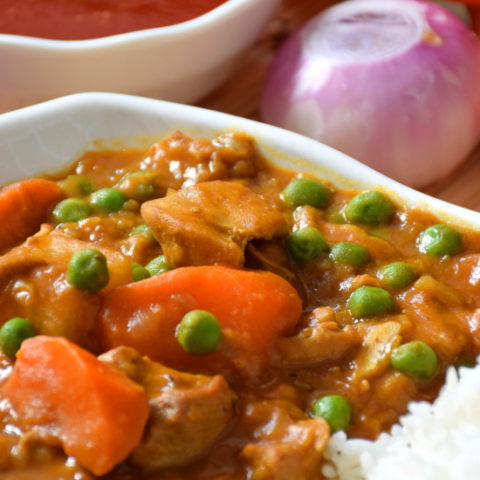
 555 views
555 viewsJapanese Curry
tasteasianfood.com
4.4
(10)
30 minutes
Your folders

 189 views
189 viewsJapanese Curry
mealprepmanual.com
4.8
(5)
40 minutes
Your folders

 512 views
512 viewsJapanese Curry
tasteasianfood.com
4.5
(20)
30 minutes
Your folders

 483 views
483 viewsJapanese Curry
delish.com
10 minutes
Your folders

 296 views
296 viewsJapanese Curry
errenskitchen.com
5.0
(34)
25 minutes
Your folders

 241 views
241 viewsJapanese Golden Curry
food.com
5.0
(4)
15 minutes
Your folders
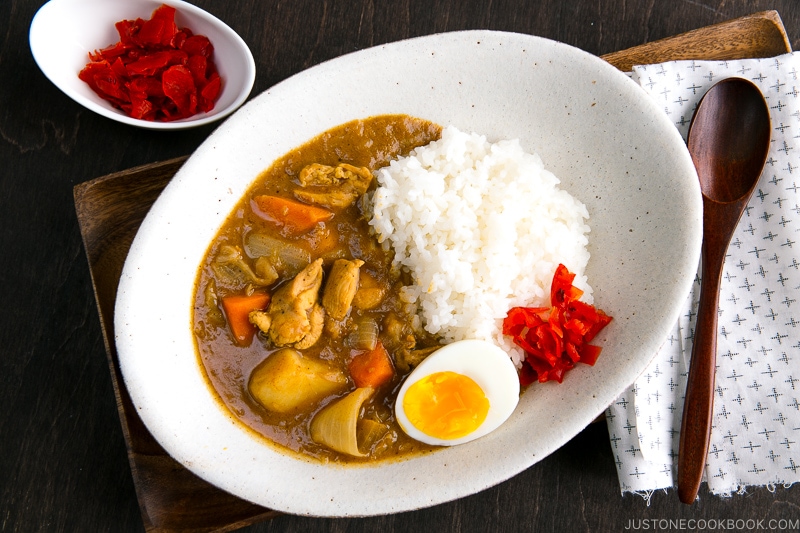
 2618 views
2618 viewsJapanese Chicken Curry
justonecookbook.com
4.7
(318)
60 minutes
Your folders

 471 views
471 viewsJapanese Curry Rice
planfulcook.com
20 minutes
Your folders

 866 views
866 viewsJapanese Curry Brick
cooking.nytimes.com
4.0
(465)
Your folders
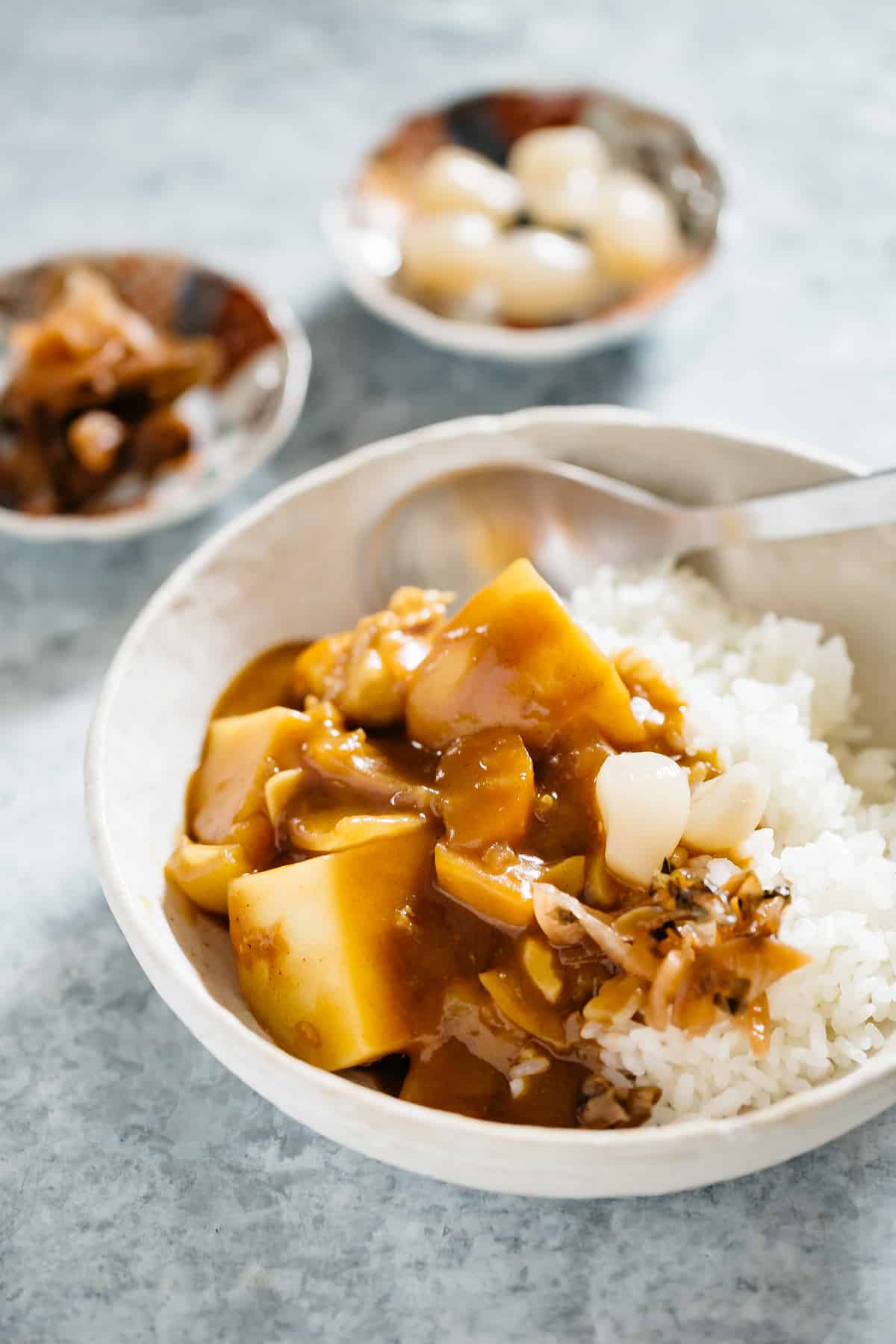
 860 views
860 viewsJapanese Curry Rice
chopstickchronicles.com
4.3
(35)
20 minutes
Your folders

 529 views
529 viewsJapanese Beef Curry
greedypanda.co.uk
45 minutes
Your folders
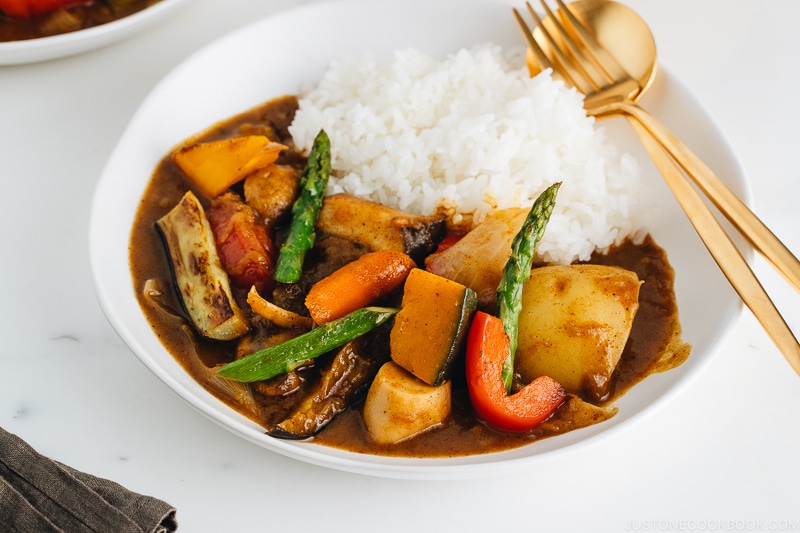
 605 views
605 viewsVegetarian Japanese Curry
justonecookbook.com
4.5
(24)
60 minutes
Your folders
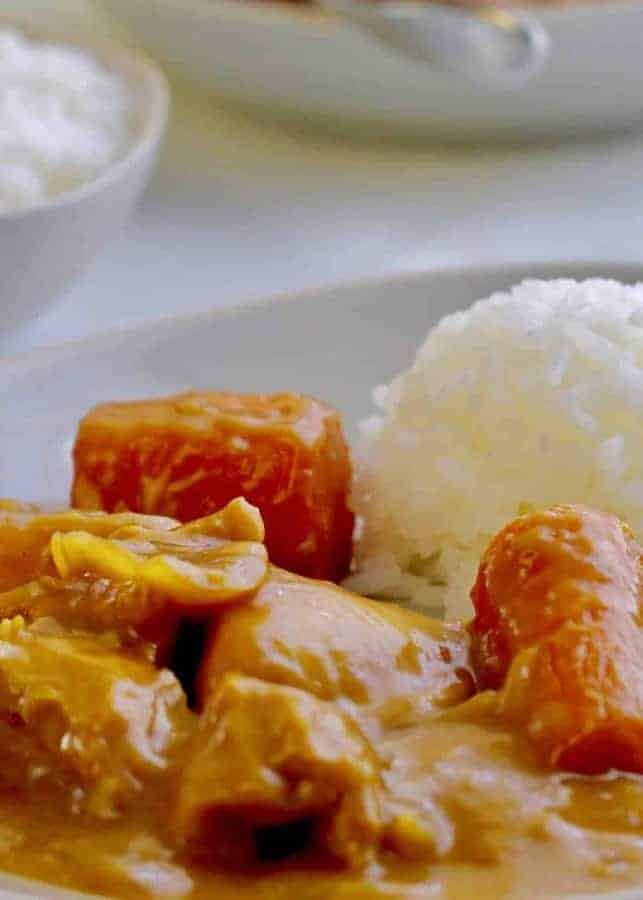
 722 views
722 viewsJapanese Chicken Curry
twosleevers.com
4.8
(31)
14 minutes
Your folders
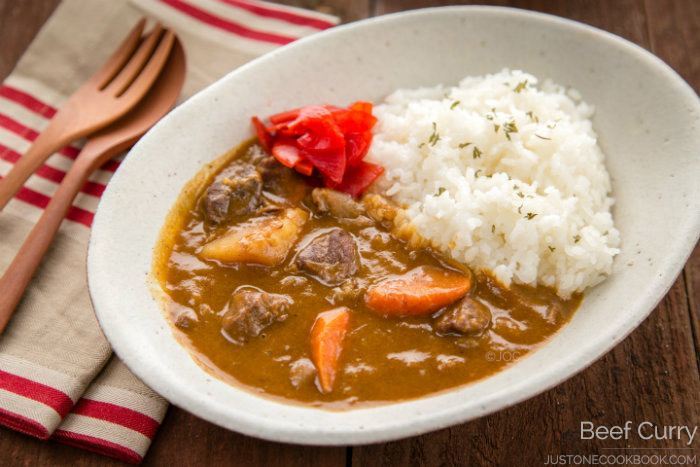
 1230 views
1230 viewsJapanese Beef Curry
justonecookbook.com
4.7
(111)
140 minutes
Your folders

 363 views
363 viewsJapanese Curry Recipe
pickledplum.com
4.8
(22)
1 hours
Your folders

 270 views
270 viewsVegan Japanese Curry
sweetsimplevegan.com
30 minutes
Your folders

 241 views
241 viewsJapanese curry - Wikipedia
en.wikipedia.org
Your folders

 163 views
163 viewsJapanese Curry Recipe
chilipeppermadness.com
5.0
(3)
45 minutes